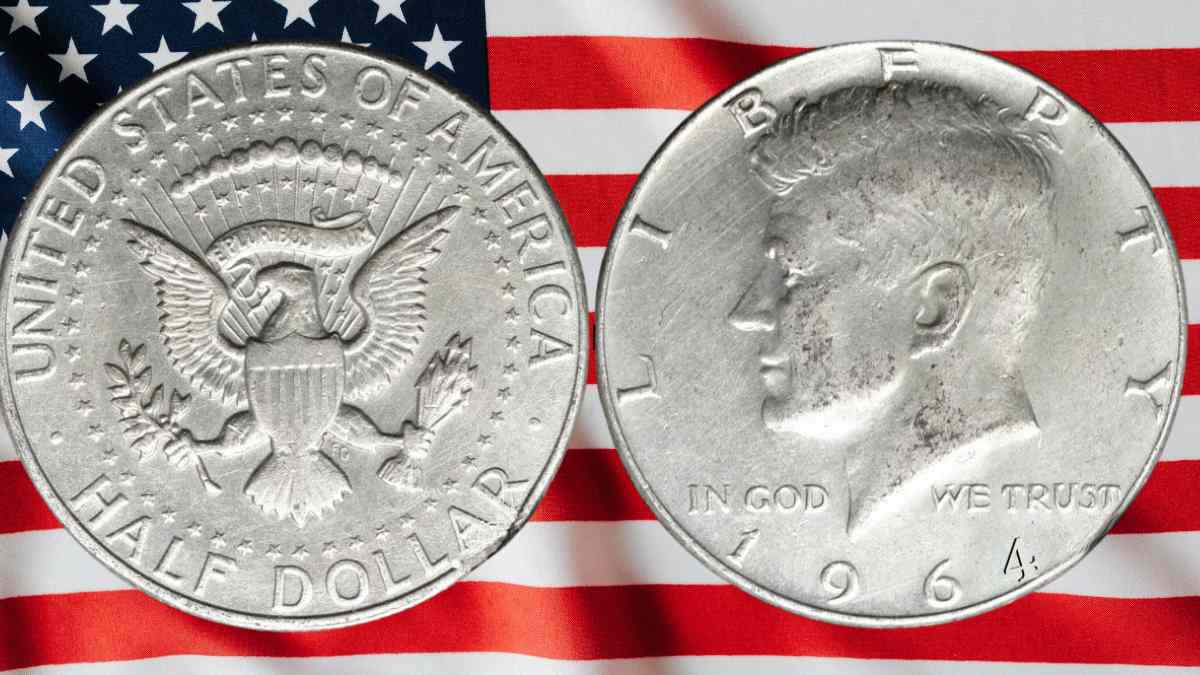John F. Kennedy remains a significant figure in U.S. history, and his legacy is reflected in the 50-cent coins minted in 1964, which have become highly valuable among collectors. These coins, featuring JFK’s image, are not only symbolic but have also gained great worth in the numismatic market.
More than 60 years later, these coins continue to hold strong appeal, particularly those from 1964. The scarcity and the fact that they were struck in silver make them especially desirable. Collectors and investors alike seek out these coins for both their historical and material value.
One of the most prized versions is the 1964 half-dollar coin with the SP68 designation. This coin is known for its sleek design and its historical significance, being one of the first coins minted after Kennedy’s assassination. The SP68 coin stands out with its unique design, boasting a sleek and attractive look that appeals to collectors and enthusiasts alike.
Why the SP68 Coin is Highly Valued with numimastic Collectors
Silver Content
Crafted with 90% silver, the SP68 coin has significant intrinsic value, making it not just a collectible but also a valuable asset.
Limited Production
With fewer coins minted, the rarity of the SP68 coin increases its market value. This limited production run makes each coin a treasure for collectors.
Record-Breaking Sales
In 2019, one of these 1964 half-dollar coins sold for a staggering $156,000 at auction, showcasing the enormous demand and value of these pieces. Auction houses like Heritage Auctions and Stack’s Bowers continue to be premier destinations for collectors looking to buy or sell these rare coins.
Specific factors influence the market demand for the SP68 coin
Mintage Number and Rarity
- The number of coins produced by the mint for a specific year and mint mark directly impacts rarity and value. Lower mintage numbers generally lead to higher values.
- Coins produced at certain mints, like San Francisco or Denver, tend to be rarer than those from Philadelphia, increasing their value.
- Varieties within the same date and mint mark, such as errors, can make a coin even rarer and more valuable.
Popularity and Collector Demand
- The popularity of a certain coin series or design among collectors drives up prices due to increased demand. Some series like Morgan and Peace dollars have enduring popularity.
- Collector preferences and interests greatly affect demand for specific coins. Age, culture, themes, and designs can influence these preferences.
- Monitoring market trends and the numismatic industry helps assess demand. Historical significance, rarity and collector preferences are key demand factors to watch.
Grade and Condition
- A coin’s condition and amount of wear heavily influence its value. Coins in excellent condition with minimal wear and few flaws are worth significantly more.
- Professional coin grading services like PCGS and NGC evaluate and certify a coin’s grade, which is a key determinant of market value.
- High-quality strike, color, and luster can boost a coin’s value.
Historical Significance
- Ancient coins and those from specific periods are often more valuable and sought after by collectors.
- A coin’s history, especially previous ownership by famous people or institutions, can increase its value.
Economic and Market Factors
- The rare coin market is affected by the economy, inflation, monetary policies, and market stability.
- Bad economic times can lower prices, while a strong economy boosts demand and values.
- It’s crucial to stay informed and seek expert advice to assess a coin’s value.
A Prized Asset for Collectors and Investors
Over time, the 1964 JFK 50-cent coin has solidified its status as a top choice for both collectors and investors. Its blend of historical significance and material value ensures its place as a prized asset in the world of numismatics.
What are some common misconceptions about the value of the 1964 JFK half-dollar coin?
- All 1964 Kennedy half dollars are rare and valuable. In reality, over 430 million were minted, so most circulated examples only have value for their 90% silver content, currently around $8-9 each.
- Any uncirculated 1964 half dollar is worth a lot of money. While uncirculated coins do sell for a premium over the silver value, most are only worth $12-15 unless in very high certified grades like MS66 or MS67.
- Since the 1964 Kennedy half was the first year of issue and a memorial to JFK after his assassination, it must be rare. The truth is it had a very high mintage compared to other half dollars due to people saving them as mementos rather than spending them. This actually makes them more common than rare in uncirculated condition.
- The initials on the coin indicate it is special or valuable. The “GR” initials on the front are the monogram of designer Gilroy Roberts and “FG” on the back are the initials of Frank Gasparro, as seen on all 1964 Kennedy halves. They do not add value.
- Having a 1964 half dollar with no mint mark means it is rare. In fact, the lack of a mint mark indicates it was minted in Philadelphia. Over 273 million were minted there in 1964, so coins with no mint mark are very common.




